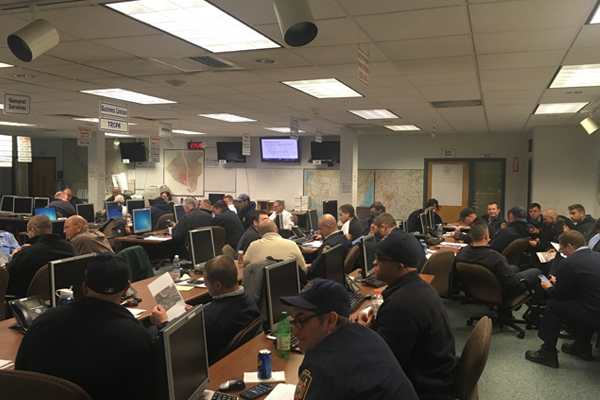More crude oil was spilled in 2014 than any year since records began in 1975
RAILROADS UNDER STRAIN
Last year, government officials inspecting railroads used by crude oil tankers uncovered almost 24,000 safety defects, which followed a string of serious oil spills and fires caused by derailments across the country. An investigation by NBC News found that more crude oil was spilled in 2014 than any year since records began in 1975.
“We are seeing a definite increase in the amount of these commodities shipped,” says Laura Schwartzkopf, program manager at the US-based International Association of Fire Chiefs (IAFC). “While there is a low probability of a rail incident, some of the infrastructure of the railroad is breaking and the tracks are 200 years old. That is when an incident can occur. And as well as crude oil there are other extremely dangerous commodities that pose a significant threat to citizens.”
To help improve preparedness in the event of an incident, the IAFC has been contracted by the US Government to provide training to emergency services and first responders. While federal regulations exist to ensure emergency response plans are in place and staff are trained, according to Schwartzkopf, it is an area that needs improvement.
“Tankers are going through very remote parts of the country that don’t always have the emergency response personnel and apparatus to handle large incidents,” she says. “There are challenges making sure everybody is trained, and challenges making sure everyone is adhering to the same message. Responders on the West Coast may not be trained in the same way as responders on the East Coast.”

We don't focus on just teaching fire departments, this is a class for the whole community
The end goal is for responders to act “seamlessly” during actual emergencies
TRAINING EMERGENCY RESPONDERS
When applying for the government contract, the IAFC partnered with a number of organisations including the International Association of Firefighters and the National Volunteer Fire Council. The training programme was put together with help from the Association of American Railroads and the Short Line and Regional Railroad Association.
“It was a unique training class that brought all the key players together to develop a comprehensive programme that benefits responders the most,” says Schwartzkopf. “We don't focus on just teaching fire departments, this is a class for the whole community: the emergency manager, police, hospitals, anyone involved in evacuation, public works, and so on.” The IAFC’s training sessions are led by instructors with hazmat and fire response experience and take place in locations across the US, where the need is most critical.
“We travel to remote areas with mostly volunteer responders who are taught what needs to happen should an event occur,” says Schwartzkopf. “We also bring in local rail industry representatives to share information about what their responsibilities are should an incident happen. That means responders have met the local officials, who they would see on the scene. Starting or furthering relationships like that is really helpful.”
Another important component of the training is giving local responders the tools to identify what goods are being transported in their particular areas. This helps prepare them for an emergency situation, Schwartzkopf says. “We have the rail representative discuss what commodities are passing through,” she says. “That shows the local responders what they need to be working on and panning for and where they should focus their exercises.”
TAKING TRAINING ONLINe
Not every local area can be reached by an instructor, so the IAFC is now designing an online training class for responders, which it hopes will broaden the programme’s reach.
“We have such a high demand for the instructor-led class but it is based on grant money so we can't get to everywhere who is asking for it,” says Schwartzkopf. “With the online class we will be able to share the training with all kinds of responders and hopefully reach even more people.”
For Schwartzkopf, the end goal is for responders to act “seamlessly” during actual emergencies. “We want everybody to be fully trained, know their role and who is in charge,” she says.
To do this, however, she says the industry must start to ask big questions about who is providing training, what information is being shared and whether it is standardised across all railroads and responders. And that, she admits “is a big undertaking”.